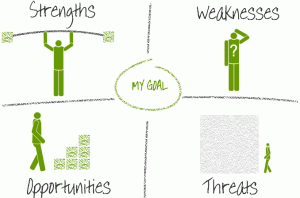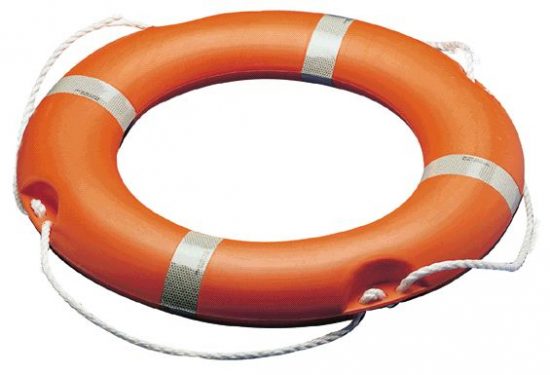 Strategic planning, as a structured and systematic process, is successful when it is leader-led and overcomes the five reasons 70% of all strategies fail. Learn how to see your plan through to success. The strategic planning process is where leaders of an organization establish the vision of the organization’s future and then develop and implement the actions necessary to achieve that future. This article expands on the strategic planning concepts addressed in Think Big, Take Small Steps and is designed to help you achieve success in your strategic planning process.
Strategic planning, as a structured and systematic process, is successful when it is leader-led and overcomes the five reasons 70% of all strategies fail. Learn how to see your plan through to success. The strategic planning process is where leaders of an organization establish the vision of the organization’s future and then develop and implement the actions necessary to achieve that future. This article expands on the strategic planning concepts addressed in Think Big, Take Small Steps and is designed to help you achieve success in your strategic planning process.
Taking SWOT Assessment to the Next Level in Strategic Planning
It was probably back in the early 90s that I first heard of the term SWOT Analysis / SWOT Assessment. I started to hear about it a lot more when I was in Germany from 1997 to 2002. The acronym was the easy part, but actually building one was, in my mind, difficult.
Now some of you out there might have never had difficulty with building a really good SWOT, so this blog really isn’t for you. However, if you are currently challenged by this tool and developing what you really think is a good SWOT, then this blog is for you!
I welcome input from those who have other techniques and experiences for getting to a great SWOT.
I call it an Assessment tool, versus an Analysis tool as it’s commonly referred to. It’s part of your Organizational Assessment as I talked about in Understanding the Different Assessment Tools, or at least should be, and can be part of any effort to examine the current state of something. I’ve since used SWOT in communications studies, marketing plans, etc. We will focus on its use in strategic planning.
The first thing that really propelled my thinking is that the SWOT is actually a high-level representation of a much deeper analysis. It’s really more of a way to capture organization’s themes and present them for further discussion during the Strategic Planning Session, which is the next stage of strategic planning as outlined in Think Big, Take Small Steps.
I have seen some very poor examples of a SWOT and even created several in my own time. If you are using brainstorming (personal or as a group) to build your SWOT, you’re going to end up with a poor SWOT Assessment. The key is to align the results of your assessment interviews, like I talk about in Assessing Your Organization Using the Military’s DOTMLPF – FREE Assessment, and build the SWOT off a more robust analysis using Affinity Diagramming. I use Affinity and Tree Diagramming a few times as I help organizations build their strategic plan and will discuss it in later blogs as well.
Understanding the design of a SWOT Assessment is the first important part. There are many key aspects of a SWOT that are not as obvious as the words would lead someone to believe. What I want to talk about is not only the four vectors, but how the tool was designed and how to use the tool moving forward. See the image below as we discuss:

As you can see from the image, things are either positive or negative in nature and either internal or external to the organization. Positive aspects are what an organization can leverage to overcome negative aspects. Internal aspects are those they control and external do not currently reside within the organization’s control. Note that something can be more than one thing (i.e., Employee longevity can be a Strength because you have a low turnover and a great deal experience, but also a Weakness because the employees might be resistant to change and you might have a large wave of retirement coming).
 Strength. Strengths are internally positive aspects about the organization. These are the things that make the organization strong and are the main things an organization can leverage to overcome internal weaknesses and external threats. Organizations tend to focus only on their weaknesses and take their strengths for granted. A failure to focus on and nurture your organizational strengths can quickly turn them into a negative. When you brainstorm to build a SWOT, you tend to come up with a lot of perceived strengths, some of which might not be true.
Strength. Strengths are internally positive aspects about the organization. These are the things that make the organization strong and are the main things an organization can leverage to overcome internal weaknesses and external threats. Organizations tend to focus only on their weaknesses and take their strengths for granted. A failure to focus on and nurture your organizational strengths can quickly turn them into a negative. When you brainstorm to build a SWOT, you tend to come up with a lot of perceived strengths, some of which might not be true.
 Weakness. Weaknesses are also internal to the organization, but these are the challenges that could prevent the organization from achieving its eventual vision. Only the most glaring weaknesses are normally highlighted by an organization when brainstorming and usually this list is short. When done correctly, this tends to be a long and difficult list for leaders to swallow. Although it doesn’t sound like SWOT, I often refer to this box as Challenges (a SCOT). Nothing in an organization will prevent it from achieving its vision, unless they fail to address the challenges in front of them.
Weakness. Weaknesses are also internal to the organization, but these are the challenges that could prevent the organization from achieving its eventual vision. Only the most glaring weaknesses are normally highlighted by an organization when brainstorming and usually this list is short. When done correctly, this tends to be a long and difficult list for leaders to swallow. Although it doesn’t sound like SWOT, I often refer to this box as Challenges (a SCOT). Nothing in an organization will prevent it from achieving its vision, unless they fail to address the challenges in front of them.
 Opportunity. Many times Opportunities and Threats can be the same thing, but simply it’s the way you look at them. Basically, these both fall into a risk category. Opportunities are positive and external to the organization. If you have an opportunity that exists within your organization, then it is a Strength that you just aren’t leveraging at the moment. The importance of focusing on the external factor of it is that there is less of a guarantee that you can turn Opportunities into Strengths. Many organizations, especially those that don’t currently have a strategic plan or the one that exists is poor, fail to focus on the external factors. Extremely effective strategies focus more on the external factors then the internal. This is how you develop strategic positioning and become prepared for the what might happen versus dealing with it when it happens.
Opportunity. Many times Opportunities and Threats can be the same thing, but simply it’s the way you look at them. Basically, these both fall into a risk category. Opportunities are positive and external to the organization. If you have an opportunity that exists within your organization, then it is a Strength that you just aren’t leveraging at the moment. The importance of focusing on the external factor of it is that there is less of a guarantee that you can turn Opportunities into Strengths. Many organizations, especially those that don’t currently have a strategic plan or the one that exists is poor, fail to focus on the external factors. Extremely effective strategies focus more on the external factors then the internal. This is how you develop strategic positioning and become prepared for the what might happen versus dealing with it when it happens.
 Threat. Obviously, Threats are the external negative aspects surrounding an organization. These are significant threats that the organization faces or could face in the future that they have no control over. Competitors and government regulations often fall into this category. If your organization is part of a bigger organization, things like down-sizing, reorganizations, and funding, even though they exist in the greater organization, still can be external to your control. The two biggest things about Threats is to determine ways to either turn a Threat into an Opportunity, or to develop a mitigation plan should the Threat materialize.
Threat. Obviously, Threats are the external negative aspects surrounding an organization. These are significant threats that the organization faces or could face in the future that they have no control over. Competitors and government regulations often fall into this category. If your organization is part of a bigger organization, things like down-sizing, reorganizations, and funding, even though they exist in the greater organization, still can be external to your control. The two biggest things about Threats is to determine ways to either turn a Threat into an Opportunity, or to develop a mitigation plan should the Threat materialize.
As you can see, the SWOT in itself isn’t really an analysis tool…it’s a way to display what you have learned in your assessment so that leadership can review it and discuss it. I have put them on separate pages before, but its best that leadership can see them all on one page and thus compare and contrast in discussion. This is why a good SWOT really is only a high-level view of what’s going on in and outside of the organization.
So, this is how I build a robust SWOT Assessment:
1. I gather all the findings that I collected in my assessment interviews and research. Refer to my earlier blog, Assessing Your Organization Using the Military’s DOTMLPF – FREE Assessment, for my techniques in interviewing. At this point you simply have a lot of detail–detail that you (and your team if you have one) need to completely read through and understand.
2. What I do is look for themes that form out of the comments and responses from the interviews and from that were gathered from my research. I use Affinity Diagramming to group these items–I will discuss this more in the next phase of my blog under Leading Your Leaders to Develop an Effective Strategic Framework, but for now, let me highlight how I do this. Normally I start with pen and paper and list out high-level groups of the information I have. Then, I transfer this to a Microsoft Excel spreadsheet, putting the grouping titles at the top of each column. Then, I copy the information I’ve collected in rows below the appropriate column headers and I allow for information to end up in more than one column. This is an individual (not group) method of doing Affinity Diagramming.
3. These column headers and all the information listed in the rows below the columns are what I call Trends, Issues, and Problem Statements (TIPS). When working with the Army, I referred to them as Emerging Insights. You could also call them Strategic Focus Areas–it really doesn’t matter. The importance of this is that you have a great deal of detail under each major heading to really explain what is going on both positively and negatively in the organization. The TIPS heading and major themes within the TIPS are what form the words on the SWOT Assessment chart. Now you can see why a SWOT is a high-level tool.
The purpose of building the SWOT Assessment is not to analyze the organization–this is why I don’t call it a SWOT Analysis. This is a high-level assessment of the deeper analysis done in the TIPS. The SWOT is a primary tool used to facilitate discussion during the Strategic Planning Session, which we will discuss in five weeks. There are still four more important topics that I want to expand upon during the Organizational Assessment. They are Scenario Planning, Innovative Thinking, Measures, and Audience-Focus. The reason I focus so much on developing the Organizational Assessment, is because if done correctly, you will really make your Strategic Planning Session go smoothly.
A SWOT in itself is not a really great tool. If you understand it and develop it correctly, it can be extremely effective in leading discussion during the Strategic Planning Session. Simply sitting in a room and brainstorming to build a SWOT will lead to a useless document. You will end up with very limited information that is heavily weighted on internal and positive aspects. A true SWOT must come from a detailed analysis of the interviews and research done in the organization.
So, 70% of all plans fail to some level; however, by following these guidelines you can help ensure your strategic plan will be one of the 30% successes that everyone reads about.
Related Links:
1. I love Dr. McDonald’s “SWAG” http://youtu.be/V6NhsoVSD88 – MUST WATCH
















